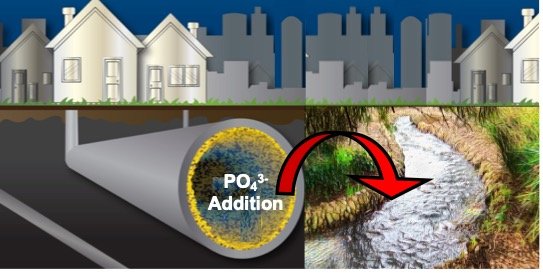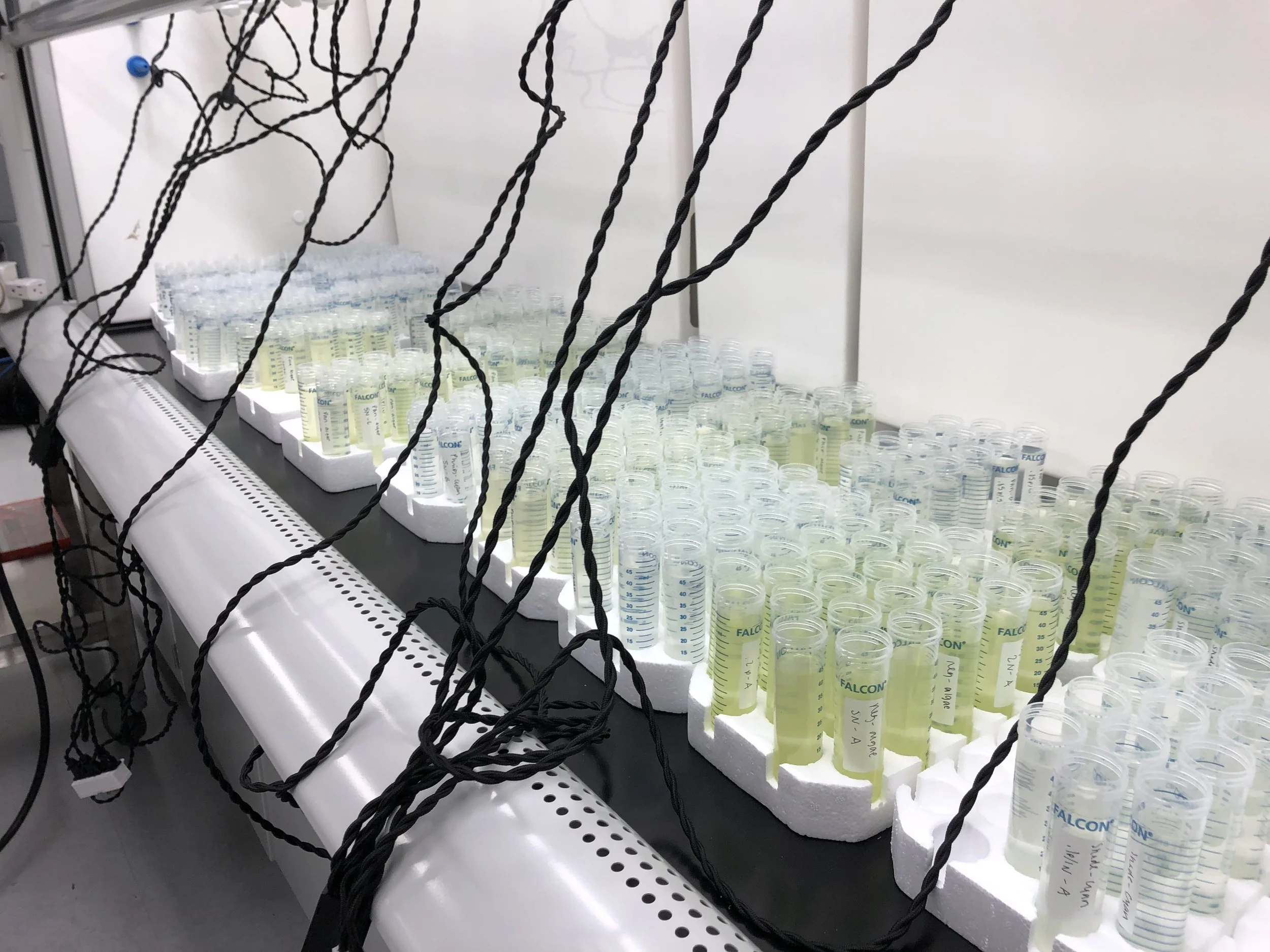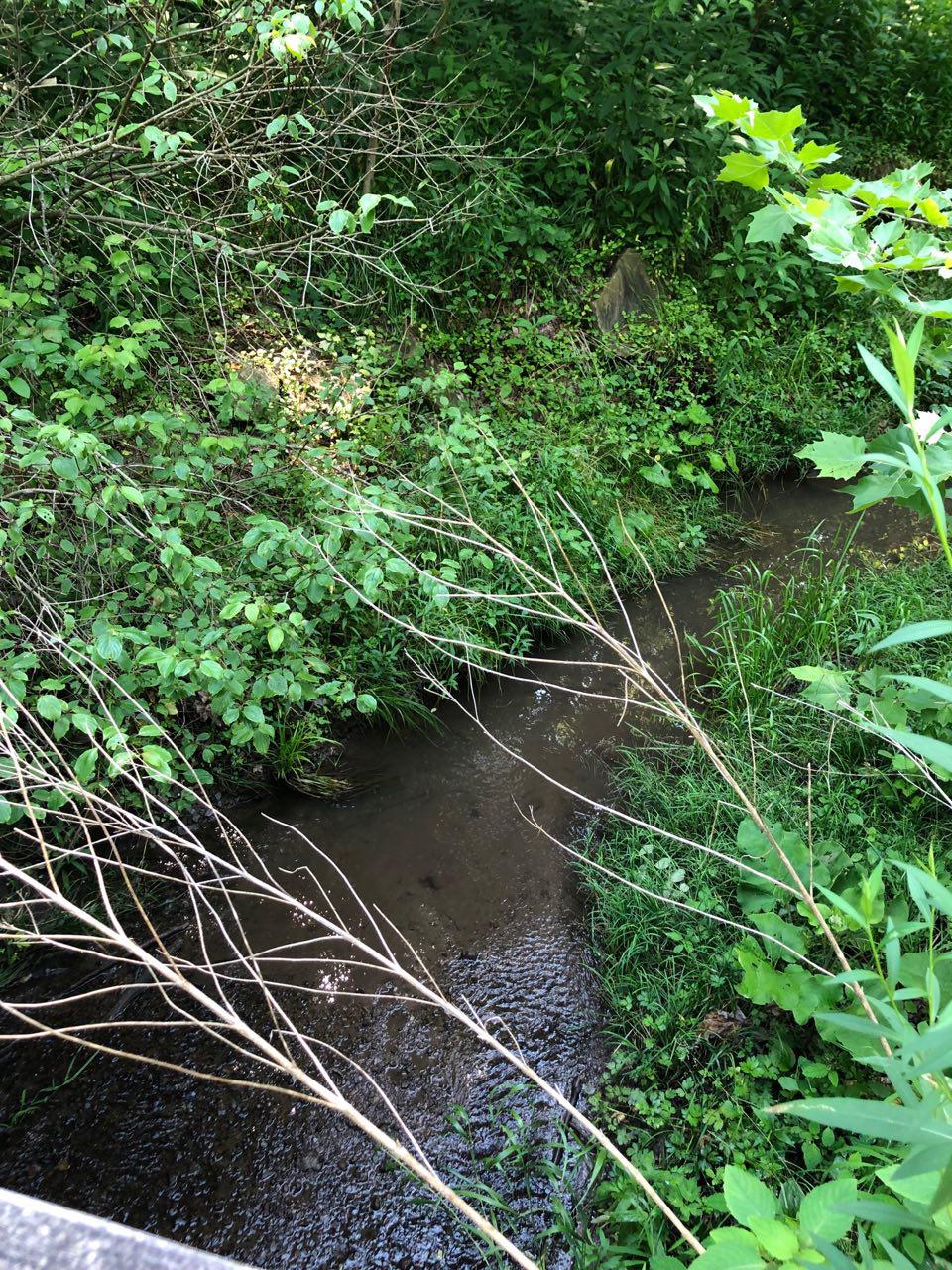Assessing the Ecosystem Impact of Drinking Water Orthophosphate Addition on Urban Watersheds
Funding: NSF RAPID grant (#DEB-1929843), and ISW was supported through a Pitt STRIVE Fellowship at the University of Pittsburgh
Personnel associated with the project: Isaiah Spencer-Williams, Anusha Balangoda, Richard Dabundo, Emily Elliott, Sarah-Jane Haig
Summary:
Many cities across the nation are plagued by lead contamination in drinking water. As such, many drinking water utilities have undertaken lead service line (LSL) replacement to prevent further lead contamination. However, given the urgency of lead mitigation, and the socioeconomic challenges associated with LSL replacement, cities have used phosphate-based corrosion inhibitors (e.g., orthophosphate [PO4-3]) alongside LSL replacement. While necessary to ensure public health protection from lead contamination, the addition of orthophosphate into an aging and leaking drinking water system may increase the concentration of phosphate leaching into urban streams characterized by century-old failing water infrastructure. Such increases in phosphate availability may cascade into nutrient and microbial community composition shifts.
The overall aims of the study are to:
- Determine the role of leaking infrastructure on urban stream nutrient and microbial dynamics.
- Document how PO4-3 additions influence microbial communities in hydrologically connected urban streams and potentially shift nutrient limitation and eutrophication potential.
Key results of this study include:
- PO4-3 addition into the distribution system impacted the microbial community composition of urban stream networks
- No significant changes in absolute or relative abundance of eutrophication indicators (Cyanobacteria or C. Accumullibacter) were observed after PO4-3 addition
- Four key functional traits relating to phosphorus / nitrogen metabolism were predicted to be impacted by PO4-3 addition.
Publications and Conference Presentations:
- Spencer-Williams, I., Balangoda, A., Dabundo, R., Elliott, E.M, Haig, S.J. (2022). Exploring the Impacts of Full-Scale Distribution System Orthophosphate Corrosion Control Implementation on the Microbial Ecology of Hydrologically Connected Urban Streams. Microbiology Spectrum, 10(6). https://doi.org/10.1128/spectrum.02158-22
- Balangoda, A., Elliott, E.M., Dabundo, R., Spencer-Williams, I., Haig, S., Assessing Nutrient Limitation in Urban Streams Following the Addition of Orthophosphate-Based Corrosion Control to Drinking Water. In Revision.
- Spencer-Williams, I., Balangoda, A., Dabundo, R., Elliott, E.M, Haig, S.J. Investigating the Impacts of Orthophosphate Lead Corrosion Control on Urban Stream and Distribution System Microbial Ecology. AEESP Annual Conference 2022. June 28 – 30, 2022.
- Spencer-Williams, I., Balangoda, A., Dabundo, R., Elliott, E.M, Haig, S.J. From Corrosion Control to Ecological Influence: Examining the Impacts of Orthophosphate Corrosion Control on Urban Stream and Distribution System Microbial Ecology. Gordon Research Conference: Microbiology of the Built Environment. June 19 – 24, 2022.
- Balangoda, A., Dabundo, R., Spencer-Williams, I. Haig, S., Elliott, E.M. Assessing the Impacts of Nutrient Limitation on Algal Growth and Ecosystem Health. AGU Annual Meeting. December 14, 2021
- Balangoda, A., Dabundo, R., Spencer-Williams, I., Haig, S., Elliott, E.M. Effects of large-scale drinking water orthophosphate addition on urban stream nutrient dynamics and eutrophication potential. SFS Annual Meeting. Virtual, May 23-27, 2021.


